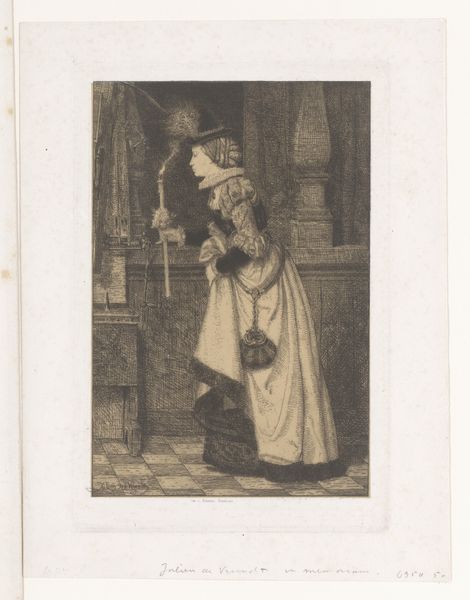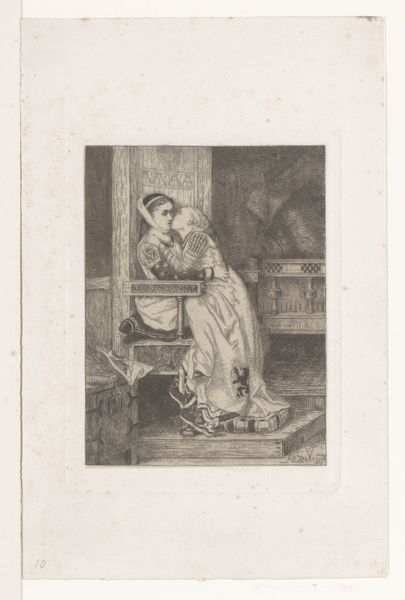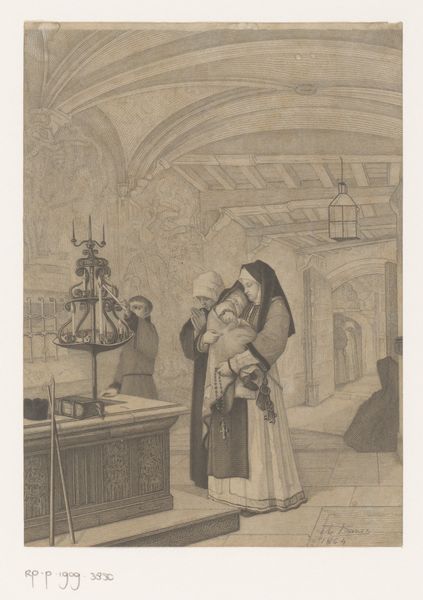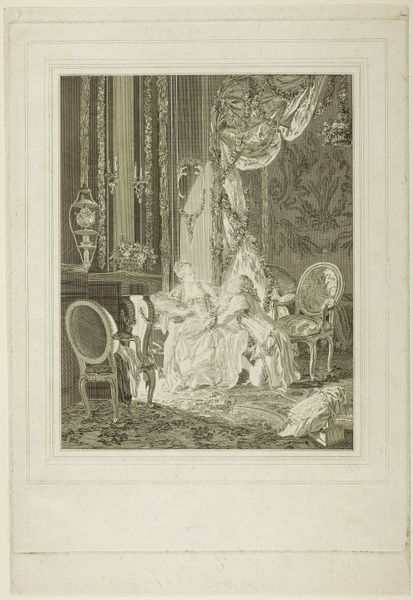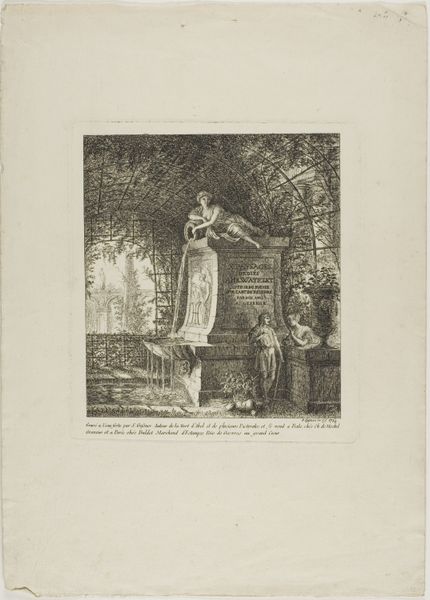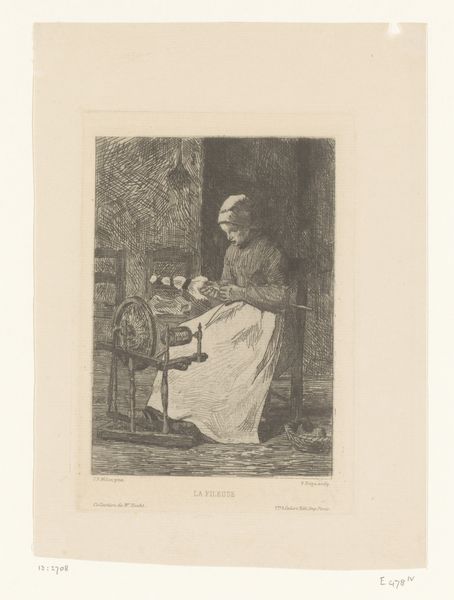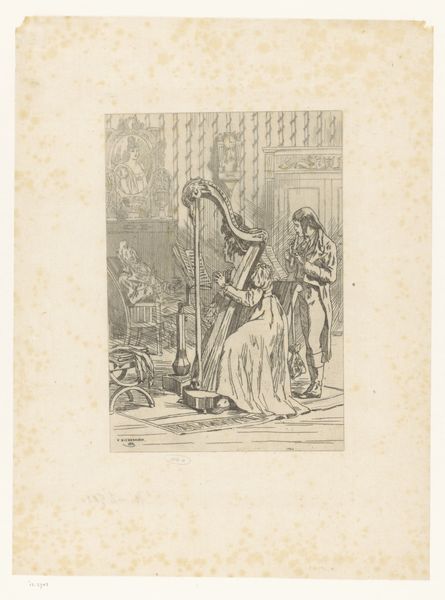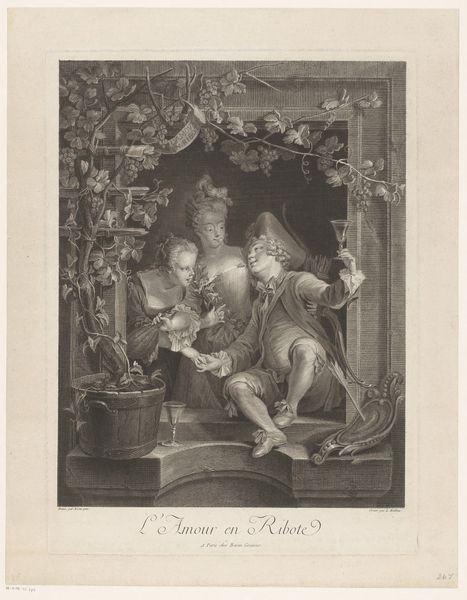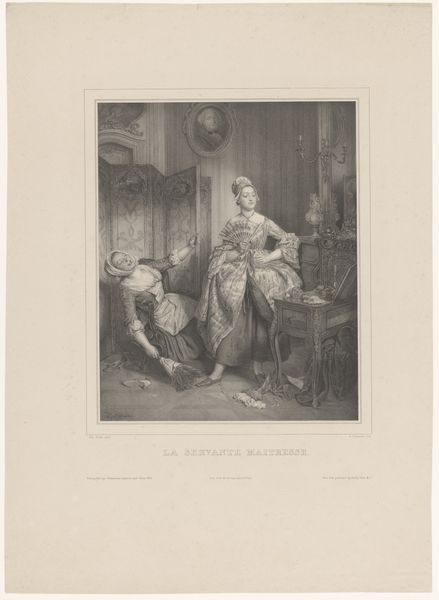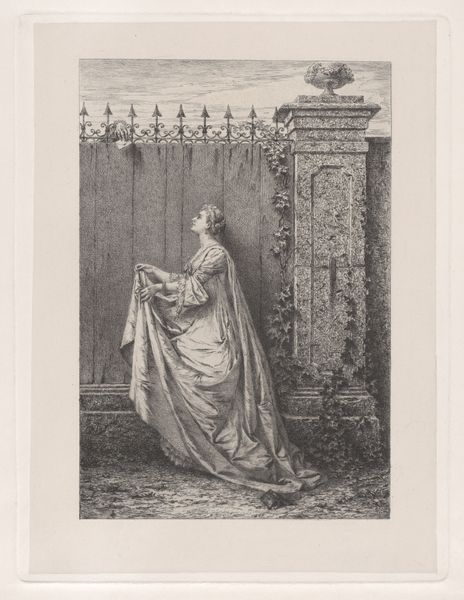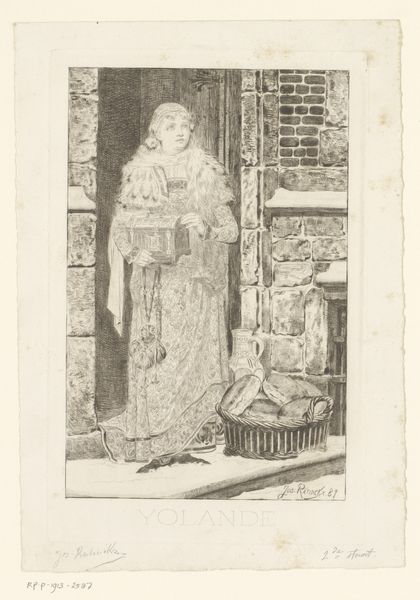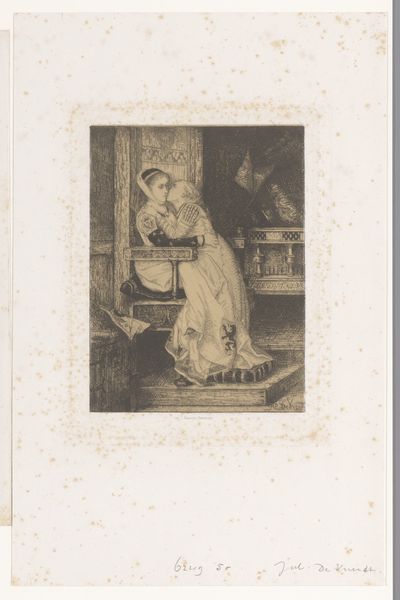
Dimensions: height 238 mm, width 160 mm
Copyright: Rijks Museum: Open Domain
Curator: Juliaan de Vriendt's "Vrouw met kaars in haar hand in een kerkinterieur", or "Woman with Candle in Hand in a Church Interior," created in 1869, invites us into a quietly intimate moment. Editor: There’s a certain stillness about it. A solitary figure, bathed in the gentle glow of candlelight—it's quite melancholic. The drawing uses print and etching techniques on this subject. Curator: De Vriendt was known for his genre paintings and portraits, often imbued with a Romantic sensibility. His works frequently explored historical narratives or captured glimpses into everyday life. You can notice both here, since the setting suggests an actual historical location used for social gathering, as much as a religious location. Editor: Indeed. Her dress certainly speaks of a different era. But that candlelight; it brings her humanity into focus, and she almost defies her surroundings with its warmth, her quiet ritual resisting the solemn space. Are we sure this is within a church setting? I’m getting mixed signals about that, culturally speaking. Curator: The title mentions “kerkinterieur”, and the architecture and subdued palette suggest just that, a sense of reverence. Also, notice the attention to detail, which are typical in a lot of genre settings involving important institutions. The meticulous rendering of textures, light, and shadow, are all indicative of its Romantic leanings. Editor: Maybe. Yet to me, her gesture of cupping the candle seems protective, as if shielding a fragile hope. Given the period, one wonders about the roles women occupied. Is it a representation of a traditional activity or something quietly rebellious, something else besides that? Curator: Well, in de Vriendt's wider body of work, we see an interest in exploring various facets of domestic life and the roles people played in society. So I wonder if the act, the gesture as such, transcends all boundaries, class or gender oriented as it is. The space might simply create the sense of a quiet stage. Editor: And maybe in that space, the artist tries to use the staging and our cultural knowledge for some disruption. Her inner light is a metaphor for strength and defiance in a constrained society. Perhaps the real message is to invite questions and allow possibilities, within and beyond church limits. Curator: Ultimately, it speaks to the complexities and subtle emotional currents running beneath the surface of 19th-century society. Editor: Right, making it an etching as relevant today as it was over a century ago. I appreciate that sense of light, in every possible dimension.
Comments
No comments
Be the first to comment and join the conversation on the ultimate creative platform.
